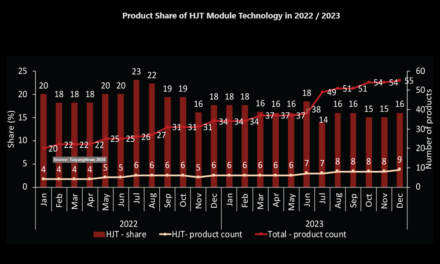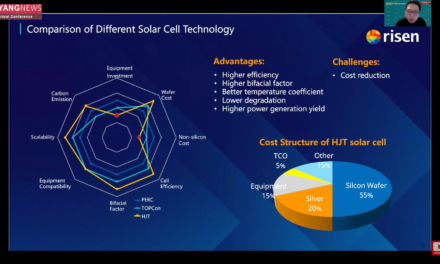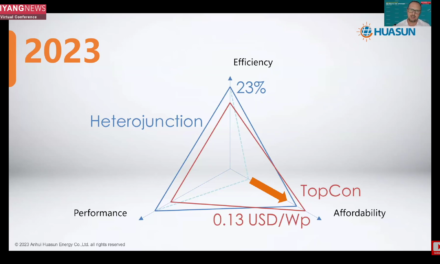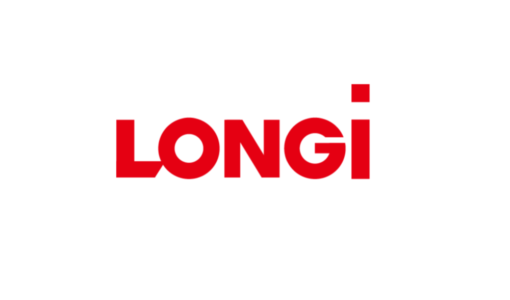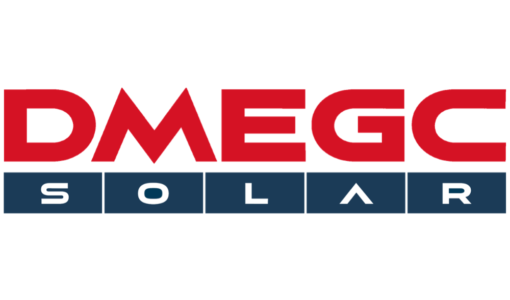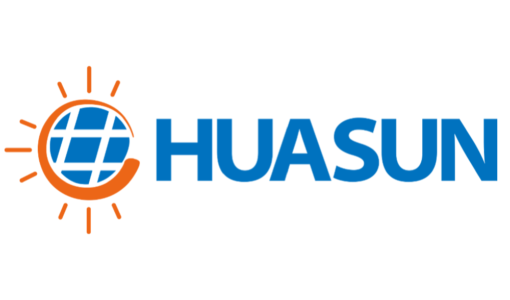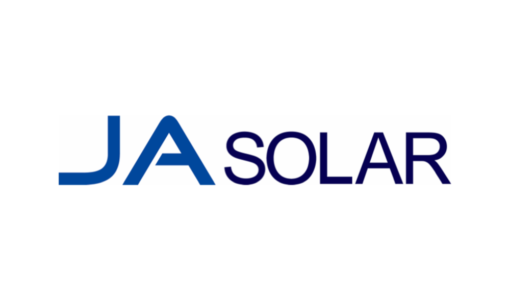- With the dramatic decrease in module prices, performance attributes have gained more dominance in the LCOE equation
- By the end of 2023, Huasun has realized 25.5% efficiency on a 210R size HJT cell
- While it has already implemented the light conversion film, SMBB and doped microcrystalline film in mass production, the company has a long list of technological improvements as part of the roadmap
A drastic drop in PV module prices over the last 2 decades has significantly shrunk the module’s price contribution to overall PV system cost. The positive outcome is that the performance attributes of a module now play a more crucial role in a PV system LCOE than the module’s cost itself. This argument is apt for heterojunction (HJT) technology and also formed the basis for the presentation from Christian Comes, director of business development at Huasun Energy, at the TaiyangNews High Efficiency Conference (see Huasun’s presentation). Comes provided insights into how Huasun’s HJT technology can be competitive with TOPCon, the darling of the moment, at the system level and LCOE.
HJT has been a desirable technology since 2018, but it has been a niche product owing to its costs. With continuous innovation and process improvements in HJT cell technology, efficiency has continued to progress while costs are lower. However, even though the gap to TOPCon has reduced, it does remain costlier by about 0.13 $/W, according to Comes.
Offsetting high cost
Comes still finds HJT competitive at the systems level. He says that while module costs made up more than 50% or sometimes even 75% of the total system cost in 2008, they’ve now reduced dramatically to less than 1/3rd, thanks to a significant drop in module prices. In today’s context, improvements in module performance attributes have a greater impact on reducing LCOE and cost reduction. Comes claims that HJT modules currently available have higher efficiencies of up to 23% and 15 to 20 W higher power ratings vis-a-vis TOPCon counterparts. Along with efficiency and power, temperature coefficient and bifaciality are the major metrics that affect module performance. Indeed, HJT has a temperature coefficient of 0.26% and a bifaciality of 85%, both of which are better than TOPCon and have further room to improve to 0.24% and 88%, according to Comes’s dec 2023 presentation. Incidentally, yesterday in the TaiyangNews Solar Power Development 2024 virtual conference, Huasun has confirmed about its HJT module’s temperature coefficient improvement to 0.24%.
Comes also presented the development of HJT at Huasun, which has achieved a 0.5% annual absolute efficiency gain at the cell level in the last 3 years. By the end of 2023, the company had realized 25.5% efficiency on a 210R size HJT cell. This consistent improvement was the result of adopting innovative technologies like the use of light conversion film, SMBB metallization, and the application of a doped microcrystalline silicon layer, replacing amorphous silicon layers in mass production. The inclusion of a light conversion film based encapsulant in the module converts UV light into a longer wavelength visible light, enhancing module current output.
When it comes to light conversion, it is more inevitable than an option, as HJT cells are so UV sensitive that they would need a UV-cutoff film if not for a light conversion film. Thus, the light conversion film, in addition to enhancing the light absorption that increases efficiency, also protects the cells from UV-induced degradation, safeguarding efficiency. The adoption of a super multi-busbar (SMBB) cell metallization pattern lets additional sunlight fall over the cell surface and reduces costly silver consumption. The deposition of a microcrystalline or a nanocrystalline silicon layer over the intrinsic layer of amorphous silicon (a-Si) of the HJT cell structure improves the passivation properties and increases cell efficiency.
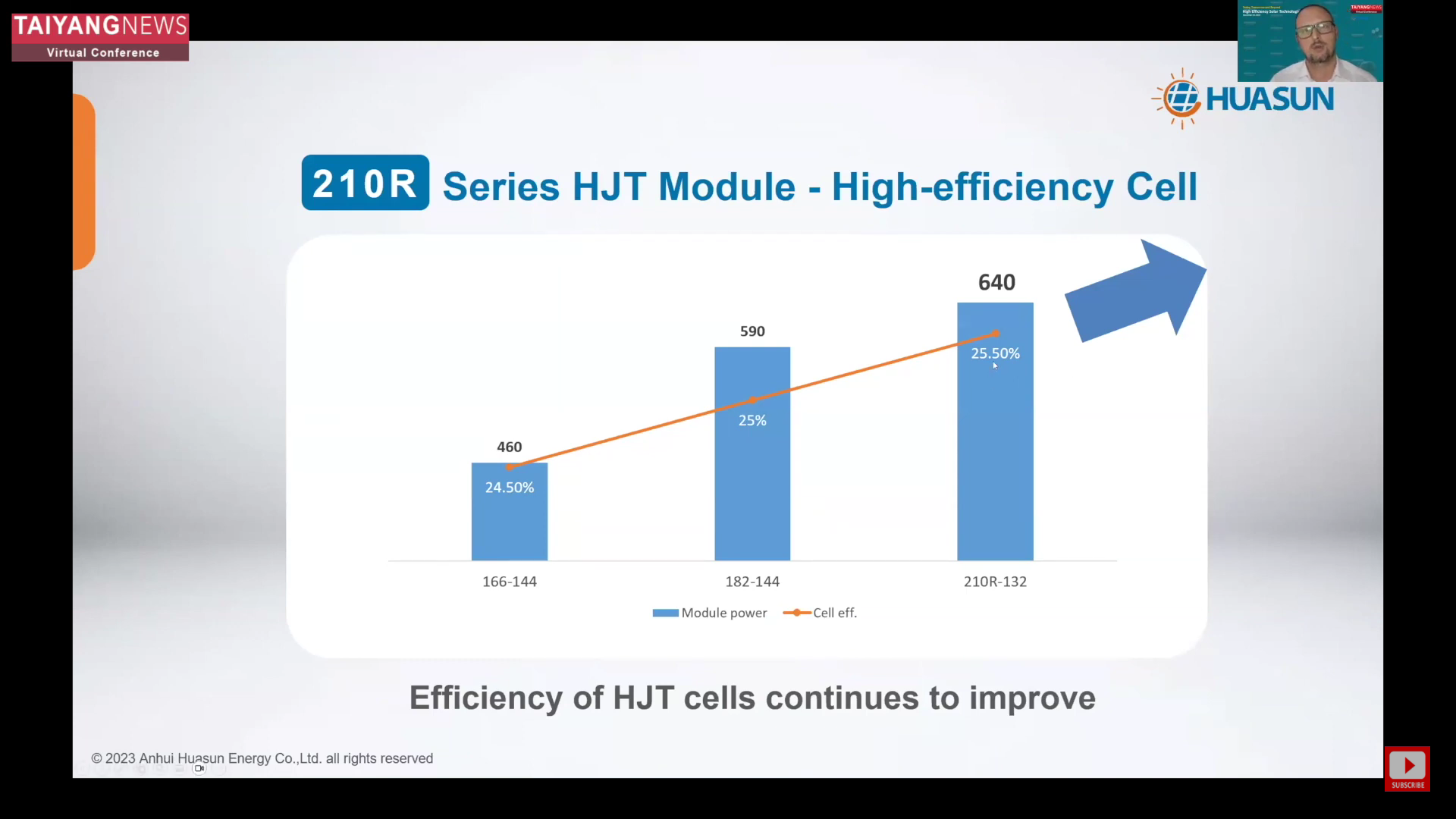
Continuous improvement: Huasun has realized 0.5% annual absolute cell efficiency improvement in the last 3 years. (Photo Credit: TaiyangNews)
While these are already implemented in mass production, Huasun also has a long list of technologies to be implemented in the near future. Technology routes like transitioning from an SMBB busbar layout to a busbarless pattern (0BB), adopting ultra-thin wafers of 90 mm thickness to improve the ingot’s utilization, and the inclusion of copper plating metallization, in addition to increasing the performance, also come with the potential to reduce costs. Additionally, the company is also working on indium-free TCO. These potential technology improvement routes are at different levels of R&D at Huasun.
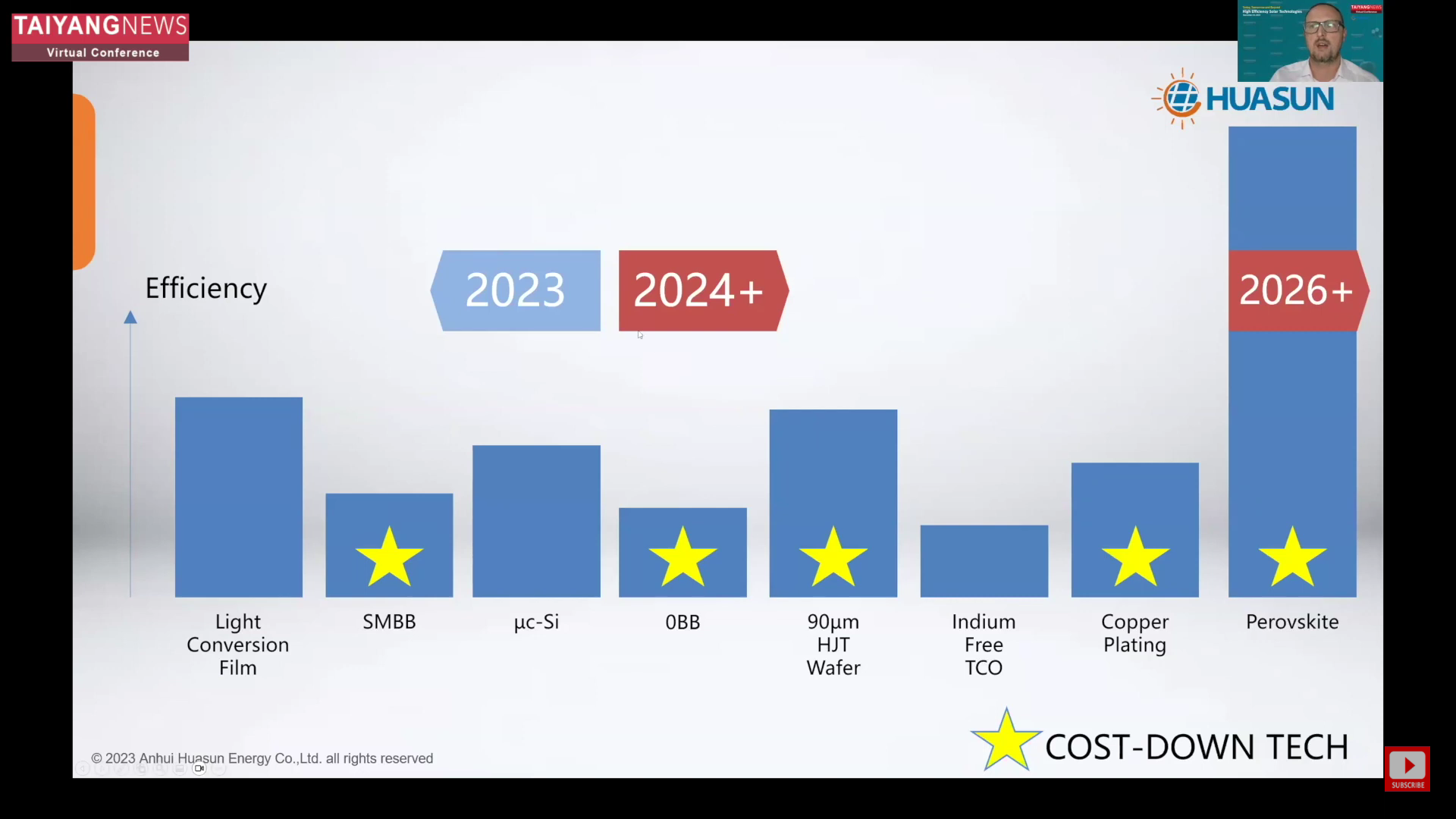
Double benefit: The technologies in Huasun’s roadmap, in addition to increasing efficiency, also have the potential to reduce costs. (Photo Credit: TaiyangNews)
Speaking of reliability, Comes claims that Huasun’s modules perform equal to, if not better than, TOPCon in any reliability metric. He also showed substantiating long-term test results. Another point that adds to reliability is that HJT cells, with no laser scribing, are fundamentally more flexible and have more mechanical load stability than TOPCon cells. “If the module is intact and glass is not broken, your cells will not have cracks,” says Comes. In addition, Huasun uses PIB as an edge sealant to restrict moisture ingression from the edges.
It is clear that HJT has progressed and still has room for efficiency, and has better performance attributes. These 2 strong fortes of HJT can already offset its current high costs. “The price of HJT modules from main players like Huasun is well within the range that can offset with these two aspects,” says Comes. He further notes that this is also paving the path for the rapid introduction of HJT in utility-scale applications. In addition, with the implementation of technologies that also have the potential for cost reduction, the costs of HJT technology would be so similar this year that the total system costs are lower with the technology. In 2025, costs are expected to drop below those for TOPCon, which is when Comes expects to see the rapid deployment of HJT technology in utility-scale.
All this is realized in a truly gigawatt scale. Huasun has a 20 GW cell and 20 GW HJT module production capacity, the largest among HJT players. The company has a sustainability goal of achieving below 300 gm CO2 eq/W carbon emissions in the near future.


